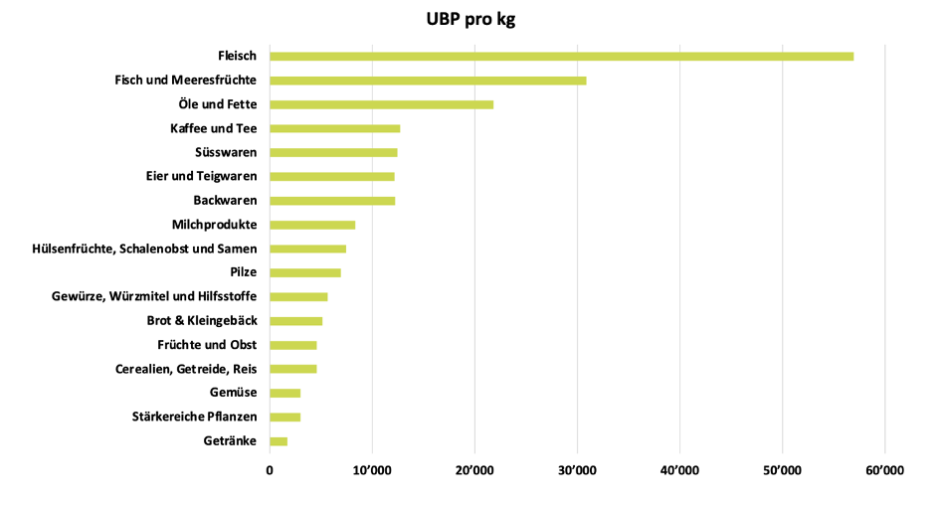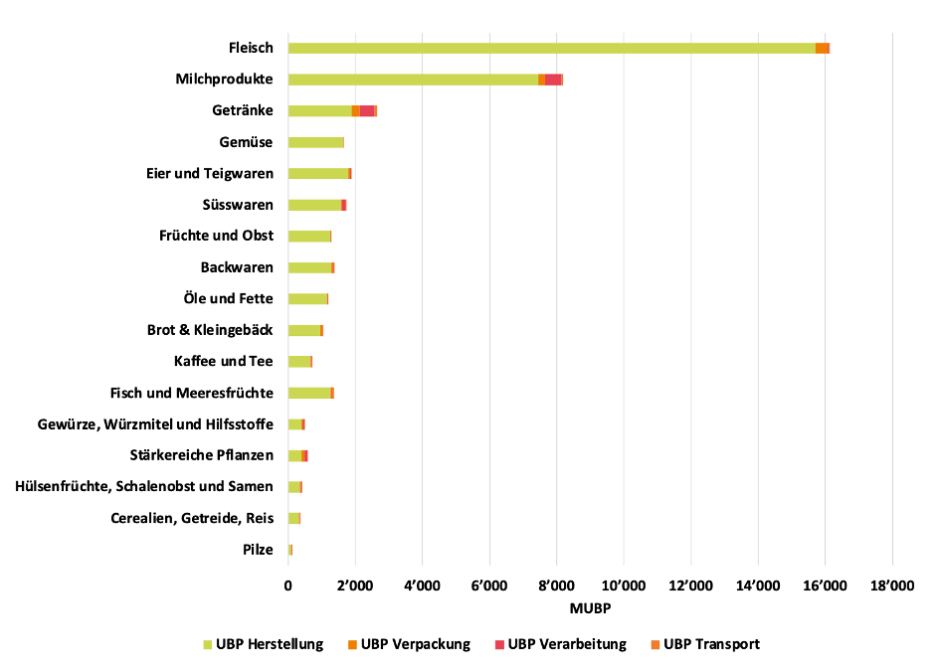Client: City of Zurich – Department of Health and Environment
Project team: Thomas Kägi, Mischa Zschokke
Services: Life cycle assessment
Year: 2021 – 2023
The City of Zurich wants to reduce the environmental footprint of its catering services. Carbotech accompanies the project and has calculated a life cycle assessment for all foodstuffs in the city’s procurement and created a monitoring concept.
Starting point
The city of Zurich has set itself the goal of reducing the environmental footprint of its catering services by 30% within ten years. The scope of this target is significant: with 450 catering operations and around seven million menus provided per year, the city of Zurich has the opportunity to bring about a relevant change in environmental impact and to set an example for other cities.
In order to strive for this and other goals of the “Sustainable Food Strategy of the City of Zurich”, it must be possible to show the current environmental footprint and assess improvements in the future. Together with myclimate, Carbotech calculated the environmental impact of the 2020 shopping basket of the city’s food procurement and developed a monitoring concept for the following years. For this purpose, over 24,000 items were assessed for their total environmental impact, greenhouse gas emissions and biodiversity loss potential. The data is prepared in such a way that results can be evaluated according to various dimensions and an efficient monitoring will be possible over future years.
Procedure
The procurement department of the City of Zurich has provided a comprehensive list of articles. All articles are categorized in such a way that a comparison with inventories from existing databases is possible. Production, further processing, packaging type and transport distance are also recorded. For processed products, the recipes are reproduced. In total, an allocation is created for around 24,000 products. Subsequently, the defined indicators (CO2eq, eco-points, biodiversity, cumulative energy expenditure) are calculated for each article.
Together with the City of Zurich, product groups of particular relevance are defined – based on their environmental impact or the total quantity in procurement. In-depth analyses are carried out for these groups and possible alternatives are also calculated. For example, a comparison of organically and conventionally produced vegetables. Finally, recommendations for action can be derived from the extended analyses.

Example: Ecological analysis of bread
Bread is an important source of energy and contains many vitamins and minerals. In Switzerland, an average of 50g of bread is consumed per day and person – that makes 18kg per year.
From an ecological point of view, breads are preferable to butter baked goods such as Zopf, Weggli or Gipfeli. The latter have more than twice the environmental impact of rye bread, for example. Around half of the environmental impact is caused by the butter contained in the bread. Another 10% comes from the eggs. In the case of conventional breads, the environmental impact comes almost exclusively (around 95%) from production, i.e. agricultural cultivation.
Excursion: Blind spots in the life cycle assessment
In life cycle assessments, organic products often come off worse than products from conventional agriculture. To stay with the example from above: Organic wheat bread has a greater environmental impact than bread made from conventional wheat. The reason is lower yields with comparable field emissions (especially ammonia and nitrate). Aspects such as soil quality, structural diversity and the like – which are much better in organic farming – are not adequately taken into account in the life cycle assessment. Therefore, comparisons of organic and conventional products based on life cycle assessments should be treated with caution.
Results
The relevant results of the study are of a numerical nature: How many CO2 equivalent and environmental impact points are caused by which foods in urban catering establishments? However, general statements can also be derived. These are not new findings, but that does not make them any less relevant:
- Plant-based protein sources generally perform better than animal-based ones – the same applies to dairy products and their plant-based alternatives.
- Especially in the case of berries, tropical fruits and citrus fruits, problematic pesticides are often used. Buying organic products can make a significant contribution to reducing environmental pollution.
- Potato products are generally preferable to other carbohydrates from an environmental point of view – unfortunately, French fries are excluded from this.
- If vegetables are bought out of season, they are best frozen, dried or preserved.
- Air transport should be avoided as far as possible. Otherwise, transport is often of little relevance to the overall environmental impact of a single product.

Outlook
The data of the City of Zurich is used for monitoring and deriving fields of action. In order to be able to carry out different analyses, the data is stored in a user-friendly tool. We may continue to accompany the city, make recommendations for action, support implementation and measure success.
Further information
The strategy for sustainable nutrition of the city of Zurich can be found here. The website also contains recommendations for action for private individuals, offers for businesses in gastronomy and a detailed list of the City of Zurich’s fields of action.


